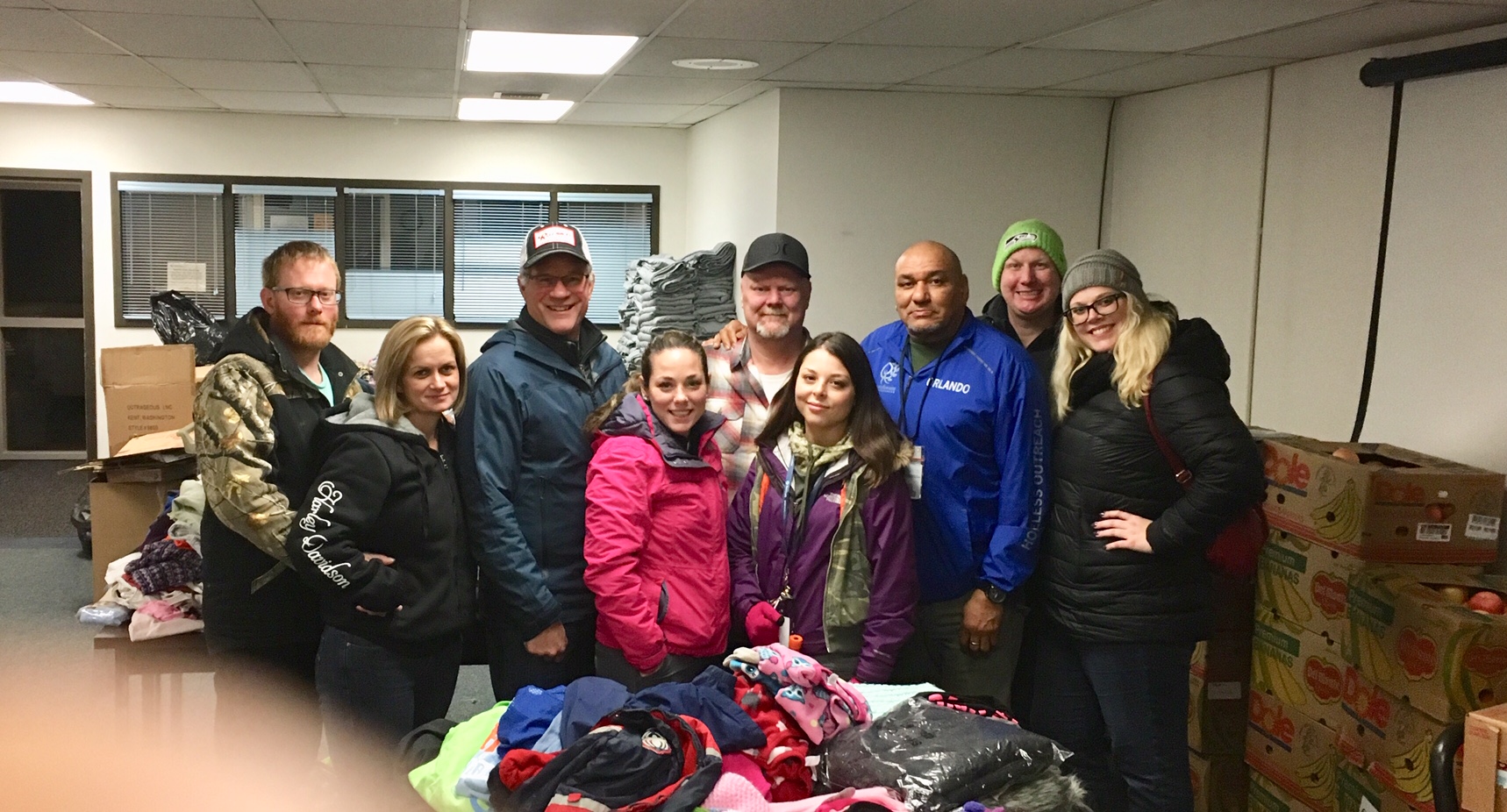We all know that some people in our nation, state, and communities are struggling with homelessness. The federally required annual Point-in-Time (PIT) count gives us a snapshot of those people throughout the nation. In Pierce County, we conduct personal interviews and collect the data on smartphone apps. While the results may be as much anecdotal as scientific, it is some of the best information we have to assess the effectiveness of our programs – and re-adjust our strategies.
In 2017 I went along with a daytime PIT teams – focusing on veterans. But this year I wanted to see firsthand the challenges faced by our “chronically homeless” – generally those who have been without a home for years and are reluctant to accept services. So, I signed up for the “graveyard” shift that worked from 10:00 p.m. to 3:00 a.m., with a specific effort to reach those hardest to engage.
We met at the Soundview Building at 9 p.m., broke up into teams and gathered our supplies. The meeting room was packed with food, Gatorade, and clothing donated to the PIT, so we could hand out food as an incentive for folks participating in the survey. Beyond the food, we had nearly 60 volunteers – twice the number of “graveyard” volunteers from last year (total volunteers for this year’s PIT exceeded 300!).
Let me share a few observations from my surveying experience.
Exceptional Human Beings:
My team of 7 (pictured below with Valeri Knight and her stalwart husband who supported all the teams – taken at 3:30 a.m.!) was led by Orlando Stumvoll from Comprehensive Life Resources. Orlando is one of the most amazing people I have met. He personally experienced many of the traumas, challenges and struggles of the people we would be surveying. His is an incredible story of overcoming adversity and addiction and giving back to his community. He is a powerful message of hope to both those trapped in homelessness and those reaching out to help them.
Jeff Rodgers from Human Services was also on our team. Brought here by the Army, Jeff has been a key leader in our work to alleviate homelessness in our County for 21 years. His passion for his work is very evident as you engage him in conversation. He drove the car I was in, so I had a great chance to ask him questions about trends over time and our programs – what is working and why – and where we can do better.

The Encampments:
With the rest of our team, we visited several established encampments deep in the woods. In some cases the “tents” were put up on private property where no trespassing signs were clearly in place. Most of the sites had previously been cleared and folks had come back – including one I had visited before on a ride-along with a Pierce County deputy.
I am still staggered by the squalor and garbage that I saw people living with. Not to mention the danger of living among used needles and propane tanks.
The other eye-opener were the piles of stolen bikes and bike parts (and about 20 WINCO shopping carts). I was startled – and a bit impressed – with the organization of it all. Wheels were together in one area; pedals were piled up in another section of the encampment. We came across one man disassembling a bike at 1:30 a.m. Neither Orlando nor Jeff could give me any insight about what was up with the bikes. It is still a mystery to me.
The People:
Everyone I met and talked with had a different story – I surveyed over a dozen personally. The one common factor was trauma. Each one had experienced significant and, in many cases, multiple traumas in their lives. Some of the trauma was readily apparent, some came out during the survey, and some was deduced.
Of the people I interviewed, the ages ranged mostly between 30-60. The youngest our team encountered was 20, and thankfully we were able to get him into the Beacon Center youth shelter that night – note he is the one who took the picture of our team at 3:30 a.m.!
We encountered an encampment of people who spoke Spanish, and thankfully our team included Marilyn from Comprehensive Life Resources and Maia Espinoza from our Executive team who could speak with them.
In one parking lot, we also came across about 20 people trapped in addiction, which was devastating their lives.
None of these people were living the life they had hoped for, and none are living the life I hope for them.
Takeaways:
A full week later and I am still processing my experience, both as a human being and County Executive. I am thankful that we have many effective programs out there serving folks who are experiencing homelessness, especially our youth, veterans, and families. I am thankful for the expansion of much needed behavioral health services in our County, but we still need to do better. I especially appreciate Orlando, Jeff, Marilyn, and Valeri – and the many others who are working day-to-day to offer help and hope to those who need it desperately. I’m grateful to many of you, and others in our community, who donated food, coats, socks, blankets and other items.
I look forward to seeing the full data from this year’s PIT. And from that data – and the information from our Coordinated Entry system – we will evaluate what is effective and what is not, and assess how we can best help more folks come out of the cold and into a home.
Thanks for reading,

Bruce
